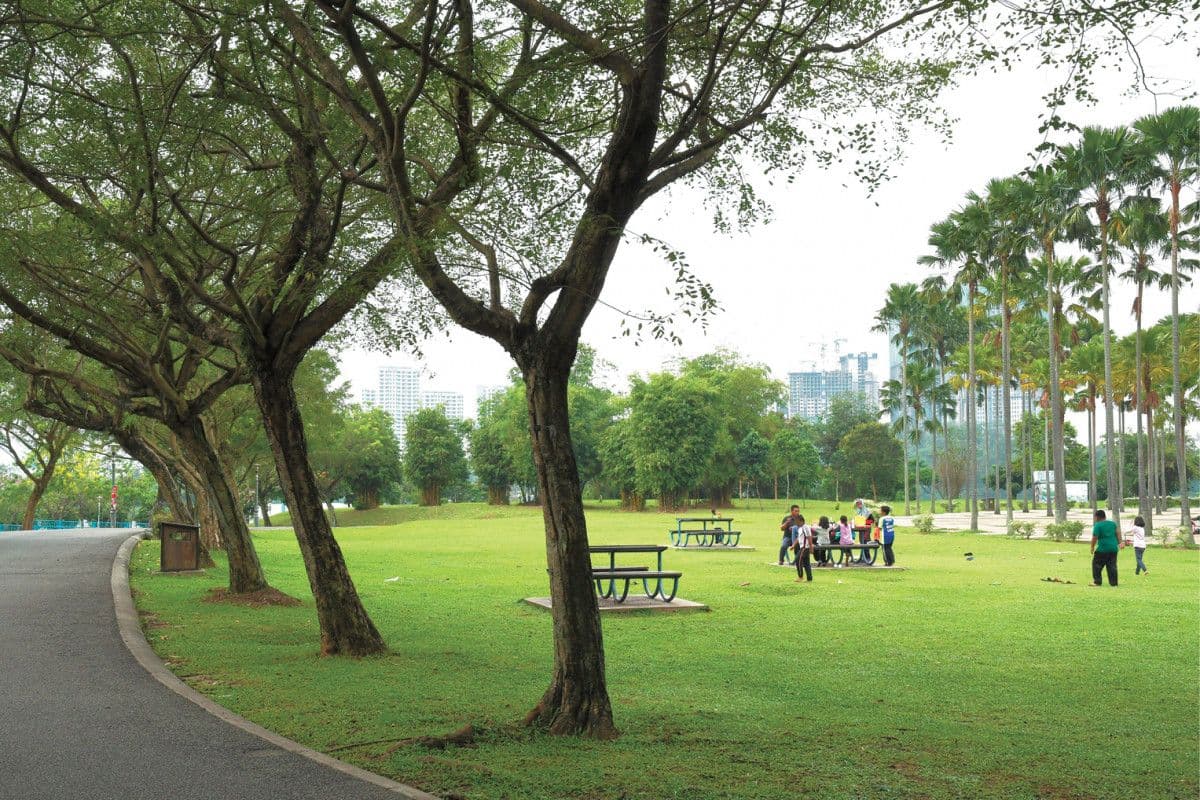
PETALING JAYA (Nov 11): One of the most important backgrounds of a soft city is combining density with diversity to create proximity, according to David Sim, author of Soft City, during a session at City Expo Malaysia (CEM) 2021 on Thursday.
The month-long CEM 2021 event is organised by the Malaysian Institute of Planners and Nextdor Property Communications comprising a CEM Forum, which runs from Nov 8 to 12, and a virtual exhibition from Nov 8 to Dec 8.
"We [need to] embrace the diversity of age, gender, ethnicity, economic backgrounds and professionalism because if we have these different people close to each other, we have the benefit of close proximity. And what we have discovered from the pandemic is how important living locally is," he said.
"We need to make a city with proximity to everything ideally within walking distance. That city has to have a physical diversity, we can't just build the same buildings. We need different kinds of spaces, we need streets and also busy places like bakeries and bus stops, but also quiet places, where children can play safely when no one’s watching and where we can sleep safely with the windows open."
Pertaining to the concept of a soft city, he said he first heard the term ‘soft’ to describe a city from Jan Gehl, who talked about soft edge.
"Jan Gehl talked about the soft edge where you put things out on the street and invite people to go in and out of the shops. Soft edge might be something as simple as a window, where you [can] see activities. Such a simple thing — no app, no technology. Just a window [providing transparency] to activities. This kind of invitation to participate, even on the most modest level, is so vital in our lonely cities, our lonely planet."
Sim mentioned that Copenhagen inspired him to write his book as the city shows how a soft city actually works. He noted that soft behaviours include interaction, being outside in the fresh air and even sleeping outside.
"If you make a nice public space, people will use it in surprising ways. And it becomes much more than just a surface and becomes a valuable place if you want to do things. There is a tendency in architecture to make things big, just for the sake of [the size]. But actually, small can be much more satisfying," he explained.
"How do we make a more sustainable society? How do we think about getting back to the human scale? If we want to address some of the challenges that society is facing, we have to start with inclusive places where different kinds of people, men and women, young and old can share the places comfortably and in a friendly manner. We need to make human-scale cities where the density is relevant and getting about, getting around, getting on with each other is also a part of everyday life."
Sim added that interventions do not need to be expensive because it was proven that cheap interventions made wonders in transforming a city into a soft city.
"In Melbourne, they cleaned up the water in an industrial harbour and now it’s possible to swim in the very centre of the city and for people who don't have money to go on a holiday that means during the summer they're learning how to swim and use the city as their resort. And this is a cheap intervention that changes the way you use the city."
He shared that his soft city muse, Copenhagen, had a big challenge — flood. To solve this issue, soft landscaping was the answer.
"Rather than investing a huge amount of money, the cheaper solution was to design a public space that could naturally flood. This meant taking away some parking, taking away some of the hard surfaces but because it was in the package of climate adaptation, it was considered worthwhile," he said.
"These are small steps towards a softer city. Small things you can do to connect you to aspects of climate change, connect you to living closer and moving about. If you ask what makes Copenhagen wonderful, it’s about really simple things,it’s just taking care of the little details. If you want people to ride the bicycle, you have to make it convenient for them. These are some of the key points of making a softer city."
When asked what is important in the process of idealition to actual construction, Sim opined that working in teams is very important.
"Not everybody knows everything, so I am always humbled when working with other experts. The next book could be about soft processes where we could bring people along the journey. I think there is a danger amongst professionals that we make what we do seem like the high priest and we have secret knowledge. We can explain in an educational way and in my experience, if you explain well, they will respect why you are doing it and will also help project the idea," he said.
"Cities are by people, not just for people. We need to have far more inclusive processes because [although] there are so many smart people, the users are the real experts. We need to have a much more dynamic process because everybody has a fragment of understanding, not everybody knows everything."